T1 Test to check molten metal flow and trial production
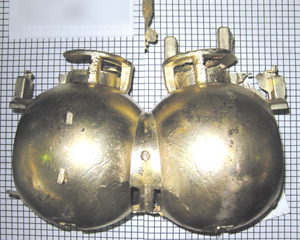
Metal mold temperature approximately 95°C
Temperature during pouring about 1005°C
Molten metal flow is good
Molten metal sufficiently fills the mold up to up-hill part for degassing.
When the product was made with a plan with fast molten metal flow supplied to product parts, overall run was sufficient.
Metal mold plan for permanent mold casting has a marked influence on molten metal flow.A defect was found in trial production caused by shrinkage in the part sandwiched by the core, which is the part that solidifies last.
We believe the defect can be resolved by using a different gate thickness and position.The varying components due to Zn depletion in molten metal appeared to cause changes in the flow of molten metal.
T2 Teeter mold test
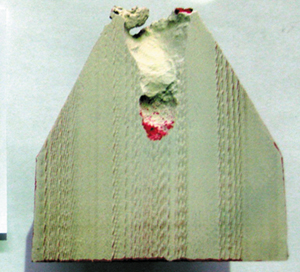
Result: Good It can be used for permanent mold casting
Inside the internal shrinkage showed slightly bumpy shrinkage.
In color check at the deepest part of the shrinkage, a small amount of rough texture was observed.(It is within the range with no problem.)
A plan that considers the possibility of relatively large shrinkage is required.
Molten metal temperature may not be suitable. A temperature range must be used that is suitable for permanent mold casting.
T3 Confirmation of mechanical properties
Tensile strength: 373 N/mm2 Degree of elongation: 23%
Standards of common brass material and bronze were met sufficiently.
T4 Analysis and confirmation of molten metal components
| Cu | Sn+Fe | Pb | Zn | Bi | P | Cd | ||
|---|---|---|---|---|---|---|---|---|
| 1. | Standard value | 60.0-62.0 | 0.7-1.1 | 0.1Max | REM | 1.8-2.3 | 0.1Max | 10ppmMax |
| 2. | Purchased materials | 60.93 | 0.86 | 0.022 | REM | 1.89 | 0.08 | 1ppm |
| 3. | Before melting | 61 | 0.82 | 0.012 | 36.13 | 1.96 | 0.076 | 6ppm |
| 4. | At the time of test production | 62.5 | 0.98 | 0.012 | 34.03 | 1.84 | 0.079 | 6ppm |
The material was not developed as a permanent mold casting material.
Attention is required as Zn tends to be depleted and the values of Cu and Sn tend to increase.
T5 Confirming processability
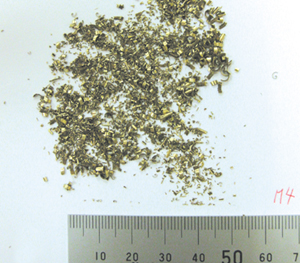
It appeared to be viscous.
Chips are small but larger than those of common brass.
Processability is good.
T6 Evaluation of pressure resistance of trial production
Result
This trial product was not perfect, but good results were obtained.Metal mold plan and casting condition have large effects on pressure resistance.
Preliminary trial production
Leakage was observed in all products in preliminary trial production.Leakage was observed at the part sandwiched by core sand that solidifies last.Leakage was observed in some preliminary trial products where coming into direct contact with the metal mold.
True trial production
It can be improved through thickness settings and the way molten metal flows based on the metal mold plan.After changing the plan and thickness setting of the product, the results in true trial production were good.
Results and evaluation
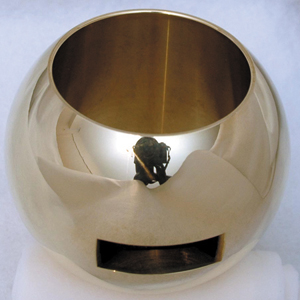
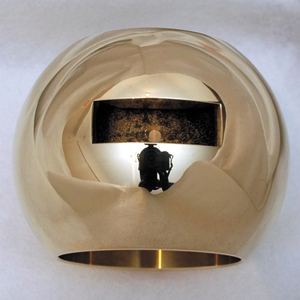
If the components of molten metal are sufficiently managed, metal mold castability by permanent mold casting is good.
This material was not developed as a permanent mold casting material.
It can be used for sealed type low-pressure permanent mold casting.
Utilization in low-pressure permanent mold casting may be easier than in gravity metal mold casting method.
However, optimal balance of molten metal components and permanent mold casting conditions, such as pouring temperature and metal mold temperature, must be investigated.
Importance of the permanent mold casting plan is high, and it is necessary to change the characteristics of the plan from that used for common lead-containing brass.